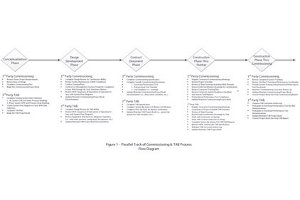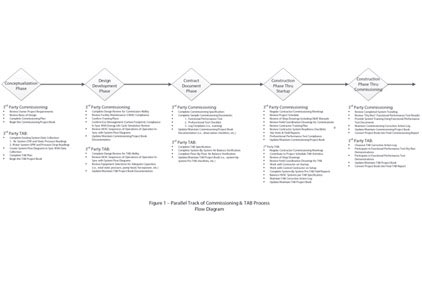In 2010, I wrote a two-part discussion on using your recession time wisely if you were unemployed and anxious to get back into the workforce. This month, I want to share with you my thoughts and experience should an unemployed engineer, facility person, or construction person decide to take things into their own hands and start up a “company of one” to challenge the economy. Also, check out my friend’s web site on the topic of entrepreneur at http://tommcquadejr.com.

|
I’m not sure how the business schools outline their approach to creating a company but here is my practitioner’s advice based on past experience, and my own approach when I started BuildingSmartSoftware, Inc. First you need to identify what will be the services that your firm will offer by asking prospects (future client) that you could provide based on your experience that will help them with their job. Some of these needs may include the following.
•Third-party commissioning (if only to catch up with all those other firms offering commissioning services)
•Third-party TAB (just as important as commissioning)
•Facility support services for asset management and deferred maintenance management (proactively looking over the horizon to predict building condition needs)
•Energy auditing of building systems and the building itself (to reduce building carbon footprint)
•Handheld technology for facility management, asset management, and construction management
•Quality control training both for internal product, as well as client product (cornerstone for success)
•Building system training of client operation personnel (a niche business)
•Owner representative for project management of specific projects (filling a void for your client)
•HVAC building system security management (refer to last month’s “HVAC Security Emergencies”)
Putting aside the topic of writing a business plan (a subject for another column), my next recommendations are as follows.
•Write a preliminary vision statement of what this service will look like in five year and what you want it to accomplish
•Identifying the potential client categories (health care, pharmaceutical, construction management firms, etc.)
•Do your own market analysis focusing on your region of the country
•Identify preliminary goals relative to why this business initiative is a good venture (pros and cons)
•Identify potential partnerships outside the company who could be helpful on a job-by-job basis.
•Understand the legal and insurance liabilities associated with this new service
•Defining the service including setting up standards to ensure quality control
•Define the deliverables for these services
•Establish pertinent milestones and associated timelines and estimate annual revenues
•Finalize the company vision by writing a mission statement (check out Taylor Healthcare Commissioning at http://taylorcx.com for a good example of vision and mission statements)
Now with a product (i.e., consulting service to be provided), I recommend creating a process flow diagram just as if you were creating an engineered HVAC system flow diagram, because a picture is worth a 1,000 words. Using my own process flow diagram to track third-party commissioning (see www.esmagazine.com/ for a sample flow diagram), the new company should establish specific activities per phase within the process. In addition, this process flow diagram offers the following features:
•Show the prospect or client how you provide your services and what the “deliverables” will be.
•Itemize tasks so that your company can create standardized checklists, questionnaire, etc. (e.g., Review OPRs: should be performed using a checklist confirming compliance such as energy budget? – Yes/No).
With this product/service flow diagram, the new business owner can now allocate a certain number of hours each week for business development and for creation of company standards drawn from the flow diagram tasks in sync with working on billable jobs. The flow diagram also allows the company owner to create a standardized project estimate sheet that will drive fee proposals based on estimated hours and dollars per process task per phase of work.
There are a lot more steps in creating a company of one, including the steps needed to continuously monitor, measure, and benchmark its performance. And of course, there is that boring part of the work called bookkeeping. Still, a company of one won’t have a lot of bureaucracy unless you talk to yourself a little too much. ES







